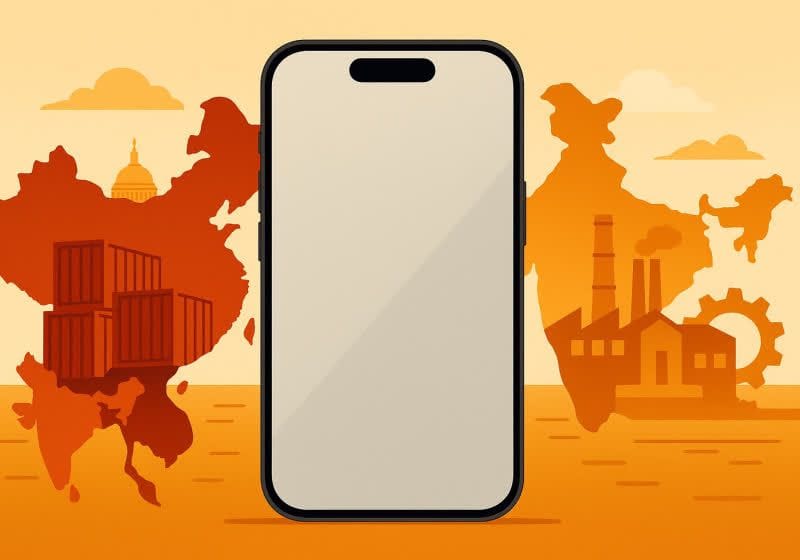iPhone exports from China to the United States dropped sharply in April, while shipments from India surged by 76% year-over-year, highlighting Apple’s accelerating shift of manufacturing away from China amid escalating tariff concerns.
New data from Canalys, now part of Omdia, reveals that just 900,000 iPhones were imported into the US from China last month, a steep 76% decline compared to April 2024. Meanwhile, India shipped approximately 3 million iPhones to the US during the same period, marking a significant rise from the previous year.
Overall, combined shipments from both countries totaled 3.9 million units in April, lower than the average monthly volumes seen earlier in 2025. This dip followed a large March shipment when Apple moved roughly 600 tons of iPhones and other products over three days from China and India to the US ahead of the initial 10% tariff imposed by the Trump administration.
China faces a baseline 10% tariff plus an additional 30% duty on its exports, prompting Apple to ramp up production in India, where it began manufacturing iPhones in 2017. Industry reports indicate Apple aims to complete the transition of all iPhone assembly destined for the US market from China to India by the end of 2026.
To meet this ambitious target, Apple would need to nearly double India’s annual iPhone output from 40 million units to over 80 million, requiring significant investment in expanding manufacturing capacity. However, experts warn that India’s infrastructure may not scale quickly enough to meet the entire US demand.
Adding pressure, former President Donald Trump recently threatened Apple with a 25% tariff on iPhones not made entirely in the US. On his Truth Social platform, Trump insisted Apple CEO Tim Cook ensure US-made production, dismissing India or other countries as alternatives.
A fully US-made iPhone, however, faces major logistical hurdles — with the device containing around 2,700 parts from 187 suppliers worldwide. Industry analysts caution that domestic production would not only be extraordinarily complex but could also send prices soaring, potentially taking years to implement even if pursued.
Apple’s production pivot underscores the ongoing challenges global tech companies face navigating geopolitics, tariffs, and supply chain resilience in a shifting trade landscape.














